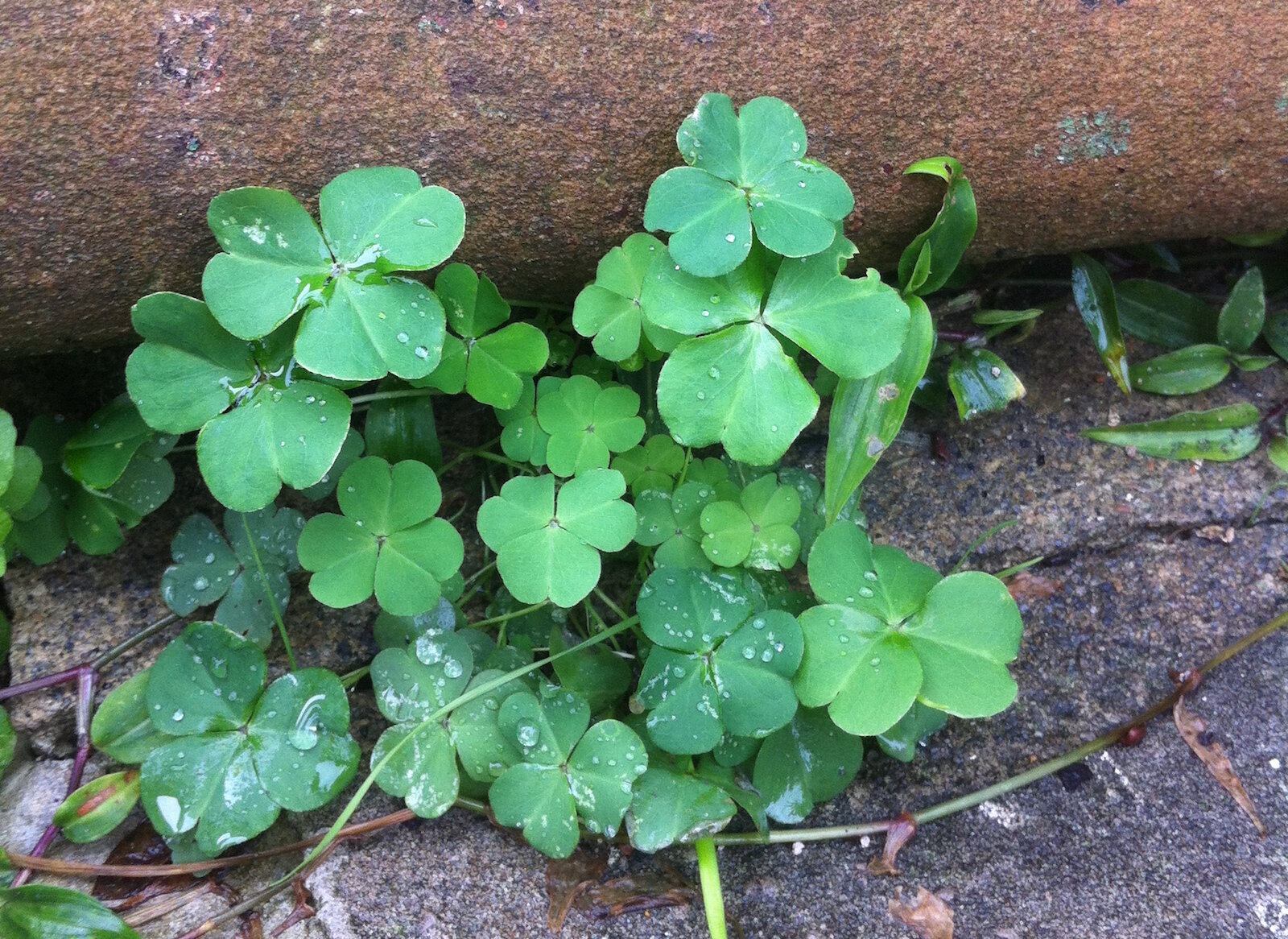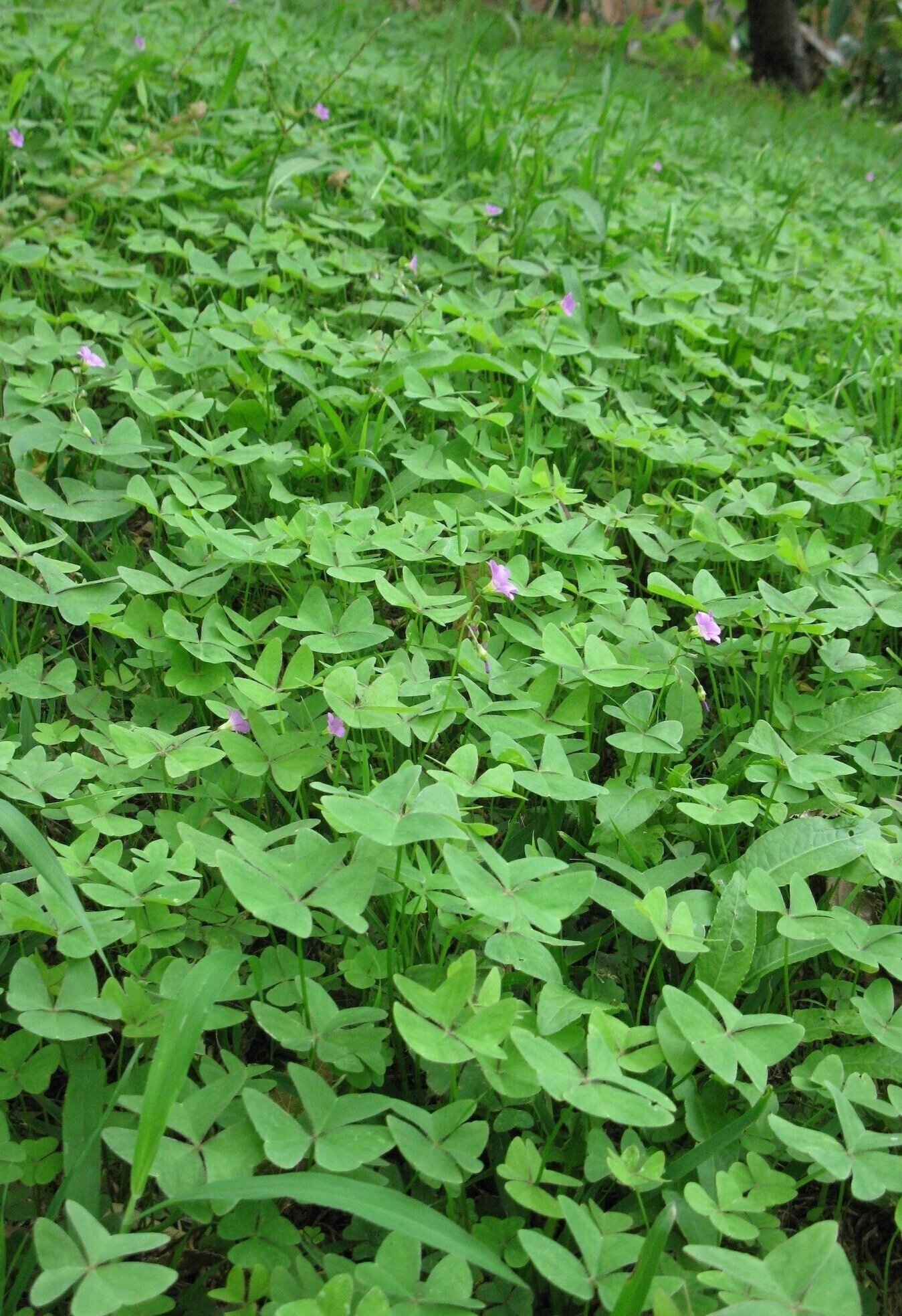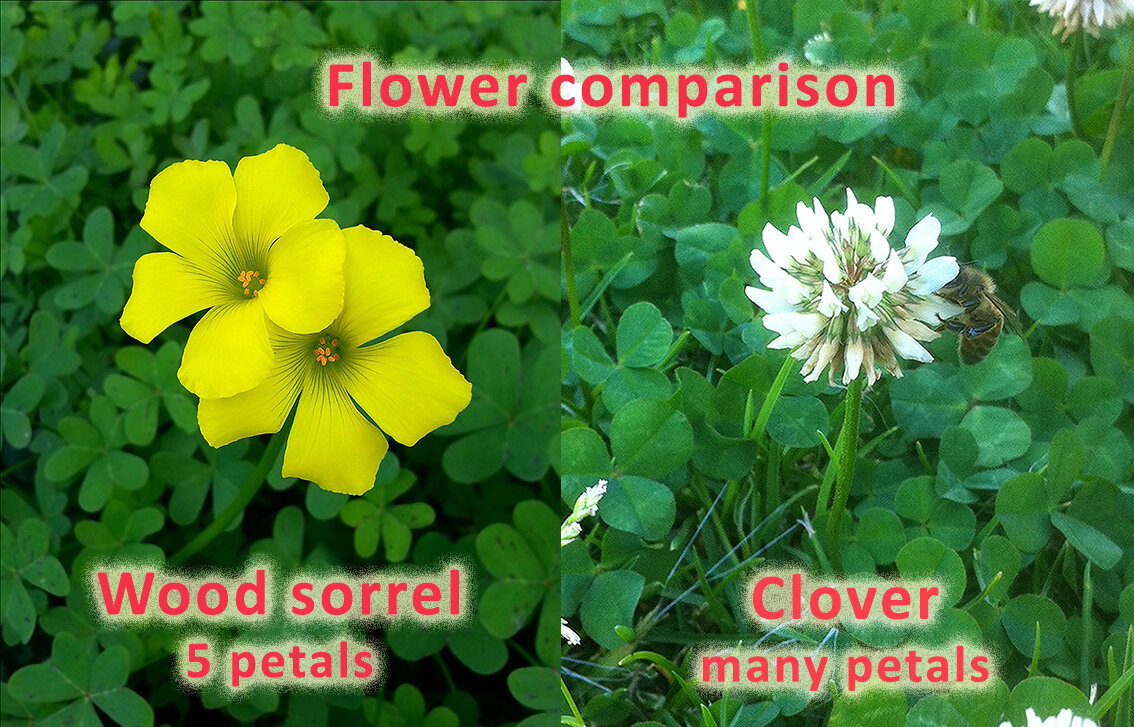How to identify and eat wood Sorrel, check your lawn for this sour edible green
Wood sorrel is easy to find and to love, with beautiful heart-shaped leaves and showy yellow or sometimes purple flowers. It is lemony in flavour and is one of the most plated garnishes in high-end restaurants right now. The leaves and flowers are used as a finishing touch, both for dishes and crafted cocktails.
Common and widespread, wood sorrel is usually found lurking under other plants, where it is shaded and protected. Some types have branched roots, while others produce little onion-like bulbs. Depending on the species, wood sorrel can be an annual or a perennial plant. It can grow up to 30cm tall and form 2-3 meters wide clusters. It can be in flower for most of the year and it is important to wait for flowering to confirm identification as it can be easily confused with clover (see below for comparison images). All of these are edible.
Wood sorrel is often seen growing in potted plants, and my mother, an avid gardener, always let it stay there because wood sorrel helps to retain moisture in the soil. The bulbs can even act as an emergency moisture reservoir for the other plants in the pot.
CAUTION
Wood sorrel contains oxalic acid, which gives it the sharp flavour. This is perfectly safe when eaten in small quantities and is present in many of our commonly eaten vegetables, but wood sorrel should not be eaten in large amounts. People suffering from rheumatism, arthritis, gout, kidney stones or hyperacidity should avoid oxalic acid.
Identification
There are about 30 species of ‘weedy’ wood sorrels in Australia, of which 7 are native. Those most likely to be found growing in gardens in south-eastern Australia are the exotic species Oxalis pes-caprae (small leaves, yellow flower, onion-like root), O. corniculata (small leaves, yellow flower, branched fibrous roots) and O. purpurea (medium leaves, pink to purple flower, onion-like root) or the native O. perennans (small leaves, yellow flower, stout taproot), O. exilis (small leaves, yellow flower, branched fibrous roots ) and O. radicosa ( small leaves, yellow flower, stout taproot). It is important to note that there is still a lot of disagreement in the scientific community about the classification of this plant with many species not being recognised widely.
Leaves and Stalk
The leaves are grouped in threes, similar to clover, but heart-shaped rather than oval. Some ornamental wood sorrels have triangular-looking leaves. The stalks can be quite long and are often the juiciest part of the plant.
Flowers, Fruit and Seeds
Wood sorrel flowers have five petals, fused at the base to form a cup. They can vary from a few millimetres to two centimetres wide. Petal colour can be white, pink, or purple, but is most commonly yellow. The fruit is small with several seeds.
Roots
The roots can be tuberous and succulent or branched and fibrous. Several species have bulbous roots (they look like little onions) and can reproduce from the tiny bulbils (the small bulbs attached to the main one). These bulbils detach from the parent plant when the soil is disturbed.
As Food
You can eat the stalks, flowers, and leaves, raw or cooked. They have a fresh, lemony flavour that makes them perfect for mixed salads. In South Australia, wood sorrel is known as ‘soursob’ and is a common snack for children on their way to school. (I heard this story from fellow foragers and now do the same, snacking on the leaves as I walk.) English recipes from the medieval period show wood sorrel sauces were served with fish and game.
The issue with oxalates and oxalic acid
There is great talk amongst the foraging community about the safety of ingesting plants that contain oxalic acids.
Oxalic acids are naturally occurring compounds found in high amounts in many common vegetables, like parsley, chives and spinach. Many wild-harvested plants ( like wood sorrel, dock, purslane and amaranth) have a high level of oxalic acids that when combining in your system with calcium create crystals (oxalates). These can cause problems with people suffering from kidney stones, rheumatic arthritis or gout and can be an issue for pregnant women. Oxalic acids are little understood but should be avoided if you have any of the above conditions. For everyone else, there are three main ways to engage with high levels of oxalic acid plants:
1- Eat a variety of foods. Do not eat buckets of spinach every day.
2- Combine your greens with dairy or calcium-rich food, this will neutralise most of the oxalic acids.
3- Blanch your greens before eating and discard the water. Most of the water-soluble oxalic acids will be disposed of this way.
A great review of how to deal with oxalic acids as a forager has been researched and shared by Adam Grubb on his website, see here>
Or another source contextualising oxalic acid in our modern diet from Wikipedia: “While any oxalic acid-containing plant, such as Oxalis, is toxic to humans in some dosage,[13] the U.S. National Institutes of Health note that oxalic acid is present in many foodstuffs found in the supermarket and its toxicity is generally of little or no consequence for people who eat a variety of foods.[14]”
Buy EAT WEEDS- A filed guide to foraging; Get a personalised copy here>
DISCLAIMER: This information should be used as a guide only. It is not my intention to advise anyone on medical conditions, rather, I am presenting a new way to look at the plants growing in your yard.
Let me help you help yourself: if you are unsure about the identity of your plants tag me in a picture or comment below, and I’ll endeavour to help.
This article is one of the many that will be published in my upcoming book: Eat Weeds. Out now!
Further Reading
Oxalis – Wikipedia - To start your research
Oxalis – Australia Living Atlas- Distribution maps in Australia
Creeping Wood Sorrel facts and benefits – Health Benefits Times - Thorough article on the health benefits of O. corniculata
Is this the Irish Shamrock? - No, it is not, see here.
Green Dean on wood sorrel - Oxalis species profile on USA database
Plant for a future - Oxalis species profile on UK database










